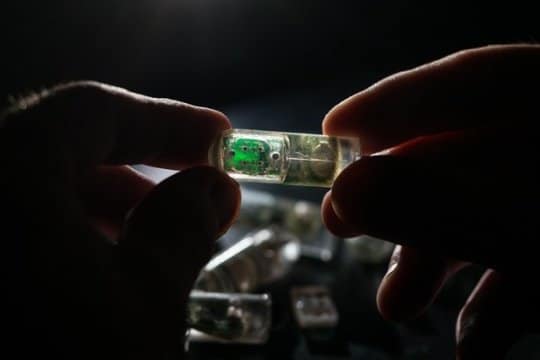Sensors respond to heme components of blood designed to a molecule that is a marker for inflammation. The cylinder sensor is about 1.5 inches long requiring about 13 microwatts of power and is equipped with a 2.7 volt battery that is estimated to power the device for about 1.5 months of continuous use.
Testing in pigs has shown that it could correctly determine whether any blood was present in the stomach, and is anticipated it could be deployed for one time use or designed to remain in the digestive tract for several days to weeks sending continuous signals.
Patients with suspected bleeds from gastric ulcers have to undergo sedated endoscopy to be diagnosed. Goal of this sensor is to circumvent unnecessary procedure simply by ingesting a tiny capsule and have diagnosis within a relatively short period of time.
Researchers plan to reduce the size of the sensor even further to help move the technology towards patient use and investigate how long the bacteria cells can survive in the digestive tract, and develop other sensors capable of detecting gastrointestinal conditions other than bleeds.
Researcher have previously adapted two other molecules which have not yet been tested: one detects sulfur containing thiosulfate ions linked to inflammation; and the other detects bacterial signalling AHL molecules that are markers for gastrointestinal infections.
Researchers say that these sensors could be designed to carry multiple strains of bacteria for diagnosing a range of different conditions. Currently there are 4 detections sites, extending it to 15 or 256 you could have multiple different cells types and be able to read them out in parallel enabling more high throughput screening and diagnostics.




